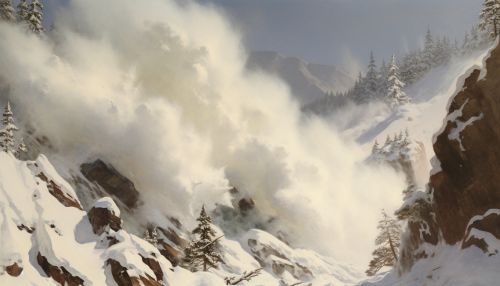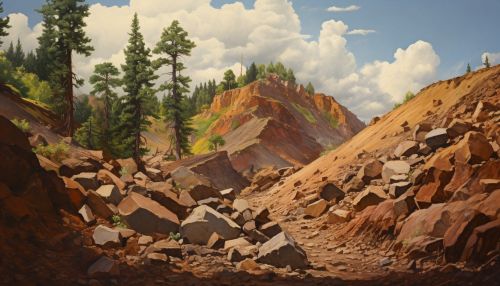The Science of Avalanches and Landslide Prediction
Introduction
Avalanches and landslides are natural disasters that occur when a large amount of snow or earth suddenly slides down a slope. These phenomena are studied in the field of geology and geophysics, and their prediction is a crucial aspect of natural disaster management. This article delves into the science behind avalanches and landslides, their prediction methods, and the specialized terms associated with them.


Understanding Avalanches
An avalanche is a rapid flow of snow down a hill or mountainside. Although avalanches can occur on any slope given the right conditions, certain times of the year and certain locations are naturally more susceptible to such events. Avalanches can be triggered by natural forces, or by human activity.
Types of Avalanches
There are primarily two types of avalanches: loose snow avalanches and slab avalanches. Loose snow avalanches begin at a single point and expand as they descend the slope, typically occurring after a heavy snowfall. On the other hand, slab avalanches involve a cohesive plate of snow sliding down, and are usually triggered by a disturbance in the weak layer beneath the slab.
Understanding Landslides
A landslide, also known as a landslip, is a form of mass wasting that includes a wide range of ground movements, such as rockfalls, deep-seated slope failures, mudflows, and debris flows. Landslides occur in a variety of environments, characterized by either steep or gentle slope gradients, from mountain ranges to coastal cliffs or even underwater, in which case they are called submarine landslides.
Types of Landslides
Landslides can be classified into different types based on the type of movement and the type of material involved. Some common types include rock falls, topples, rotational slides, translational slides, and flows.


Avalanche and Landslide Prediction
The prediction of avalanches and landslides involves understanding the factors that influence these events, monitoring these factors, and then using this information to predict the likelihood of an event occurring. This is a complex process that involves a combination of field observations, laboratory experiments, and numerical modeling.
Factors Influencing Avalanches and Landslides
The factors influencing avalanches include the slope angle, the snowpack conditions, the weather, and human activity. For landslides, the factors include the type of rock and soil, the slope angle, the presence of water, and human activity.
Monitoring and Prediction Techniques
Monitoring techniques for avalanches include the use of remote sensing, field observations, and snowpack tests. For landslides, monitoring techniques include the use of ground-based observations, remote sensing, and geotechnical investigations. Prediction techniques generally involve the use of statistical models, numerical models, and decision support systems.
Implications and Management
The implications of avalanches and landslides are significant, as they can lead to loss of life, damage to infrastructure, and economic loss. Therefore, effective management strategies are essential. These strategies include hazard assessment, land use planning, design of protective structures, and emergency preparedness.
